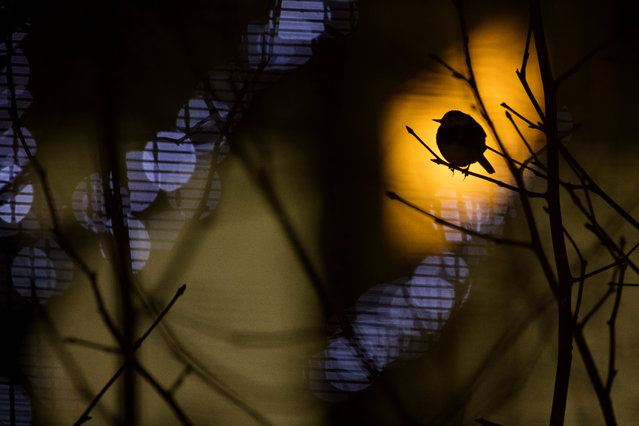
Overall and urban wildlife category winner: Daniel Trim, Heathrow roostings. “In winter, pied wagtails roost communally in urban areas, both for protection and for the additional warmth given off by buildings and lights. This extra degree or two can make the difference in harsh weather. Here, a single individual out of hundreds is silhouetted by the lights of Terminal 5 at Heathrow airport”. (Photo by Daniel Trim/British Wildlife Photography Awards 2017)
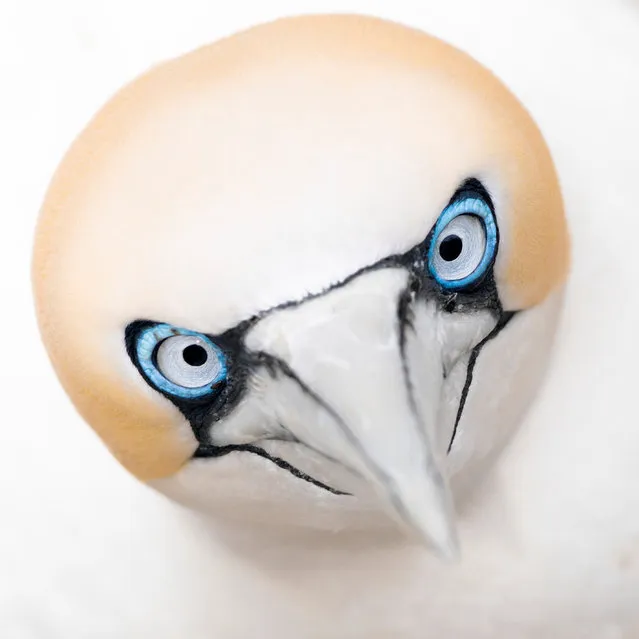
Melvin Redeker, animal portraits category winner: Natural Beauty, Isle of Noss, Shetland Islands. “Looking for a different perspective for a gannet portrait, I positioned myself on top of the cliffs. Looking straight down I had an intimate view of a group of gannets sitting on a higher ledge. I talked to them and one gannet looked up, revealing its rounded head, symmetry and beautiful blue eyes against its white feathers”. (Photo by Melvin Redeker/British Wildlife Photography Awards 2017)
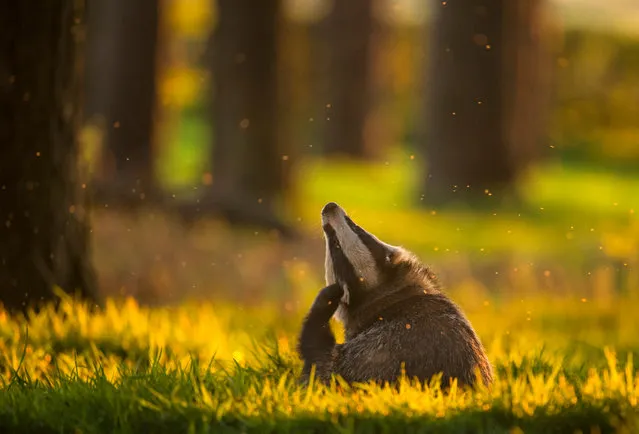
Andrew Parkinson, animal behaviour category winner: Crepuscular Contentment, Derbyshire. “In 15 years of working with badgers I’ve never seen a badger sit out in the open to have a scratch. I was sat concealed behind a tree and downwind so it was especially nice that the badger had his back to me, demonstrating just how inconspicuous and inconsequential my presence was”. (Photo by Andrew Parkinson/British Wildlife Photography Awards 2017)
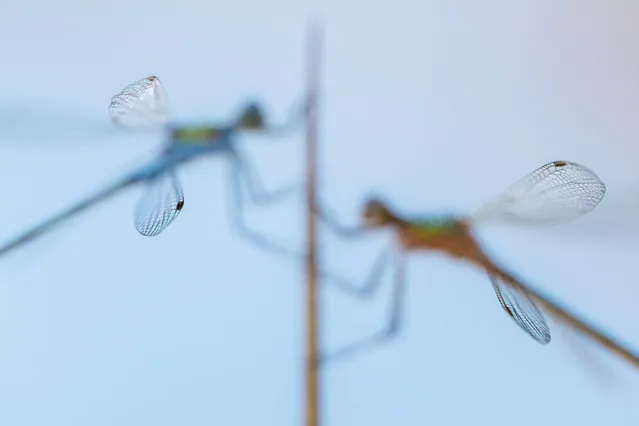
Ross Hoddinott, close to nature category winner: Wing tips, Broxwater, Cornwall. “I’m always looking to capture less conventional close-ups – maybe through creative lighting, use of depth of field or my choice of focus. With this image, I wanted to place the emphasis on the delicacy and design of the damselfly’s wings, so carefully placed my focus on the wingtips. This type of shot is very Marmite – you’ll either love it or hate it!”. (Photo by Ross Hoddinott/British Wildlife Photography Awards 2017)
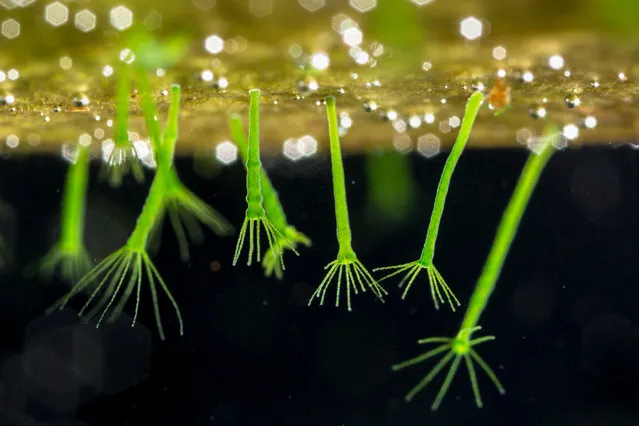
Alex Hyde, Hidden Britain category winner: Green Hydras, Derbyshire. “The diversity of life in my small garden pond never ceases to amaze me, but many of the most fascinating subjects require high magnification to be appreciated. Measuring only a few millimetres in length, these green hydras were dangling from the underside of a lily pad. They capture prey with stinging tentacles and when disturbed they quickly retract into a small, compact green blob that is easily overlooked”. (Photo by Alex Hyde/British Wildlife Photography Awards 2017)
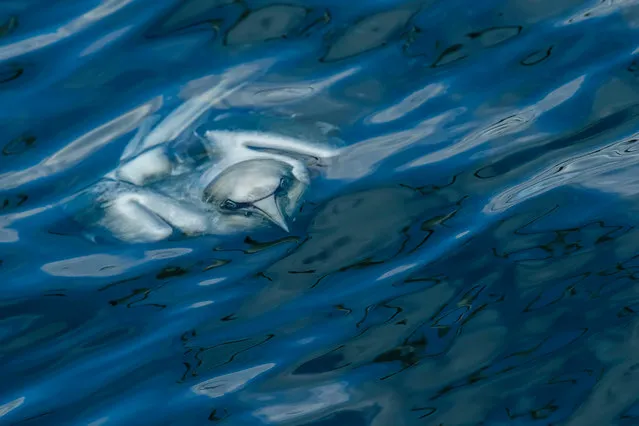
Caron Steele, coast and marine category winner: Emergence, Bempton Cliffs, Yorkshire. “Having seen many diving gannet photographs I wanted to try and capture something a bit different. I watched the birds fishing and was fascinated by the way the gannets would emerge from nowhere to steal another bird’s prey. I was keen to capture the moment just before they broke the surface, while they were still in ‘stealth mode’. A combination of bright sunshine and cloud made setting the exposure difficult, but the result has some lovely patterns on the water”. (Photo by Caron Steele/British Wildlife Photography Awards 2017)
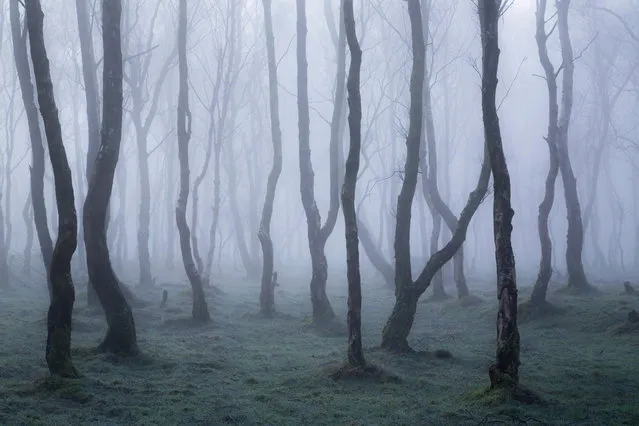
Francis Joseph Taylor, wild woods category winner: A Magical Morning, Derbyshire. “Thick fog drifted through the eerie silver birches at Bolehill Quarry in the Peak District national park, creating a magical morning of light”. (Photo by Francis Joseph Taylor/British Wildlife Photography Awards 2017)
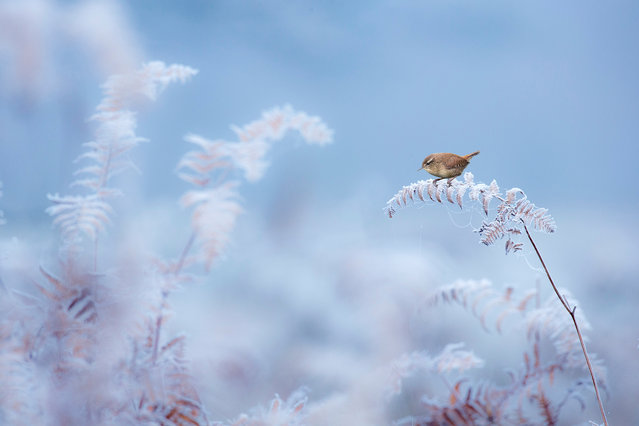
Ben Hall, habitat category winner: Wren on Frost-Encrusted Fern, Dunham Massey, Cheshire. “Following a cold, clear night I visited a local woodland to photograph deer. The temperature had dropped well below freezing during the night and frost clung to the trees and foliage, completely transforming the landscape ... After some time I noticed a wren flitting around in the frost-encrusted ferns. I set up my tripod and waited, following it with my lens as it moved. Eventually, it alighted on the top of a fern and I inched my way back in an attempt to show the wren in its wintry environment”. (Photo by Ben Hall/British Wildlife Photography Awards 2017)
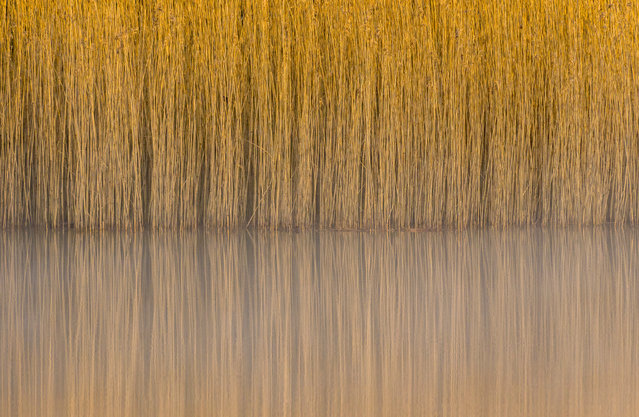
Steve Palmer, botanical Britain category winner: Reeds, Lindow Common, Wilmslow, Cheshire. “I’d always been fascinated by the almost abstract patterns and reflections of these common reeds, but the conditions had never been perfect, despite numerous visits. However, on this morning the water was still and the light was soft and I was able to capture the image I was after”. (Photo by Steve Palmer/British Wildlife Photography Awards 2017)
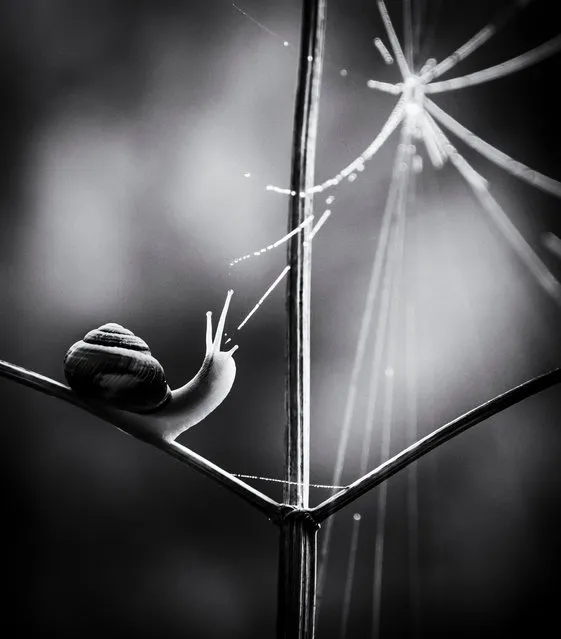
Paula Cooper, black and white category winner: Web of Life, Thetford Forest, Norfolk. “I took this on a very misty day in Thetford Forest. It was too misty to photograph the trees so I tried looking for something closer up; I spotted this little snail making its way up a plant stem. I was lucky that at the moment I took this image the snail looked up towards the spider web”. (Photo by Paula Cooper/British Wildlife Photography Awards 2017)
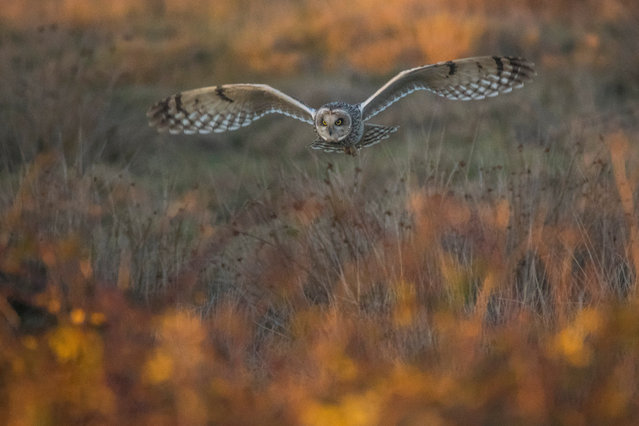
Matthew Roseveare, 12-18 years category winner, The Golden Hour Hunt, Farlington, Hampshire. “As the light began to fade a short-eared owl emerged to hunt for prey above the marshes. Standing on the sea wall I was amazed when it began to fly towards me – it is a moment I will never forget!”. (Photo by Matthew Roseveare/British Wildlife Photography Awards 2017)
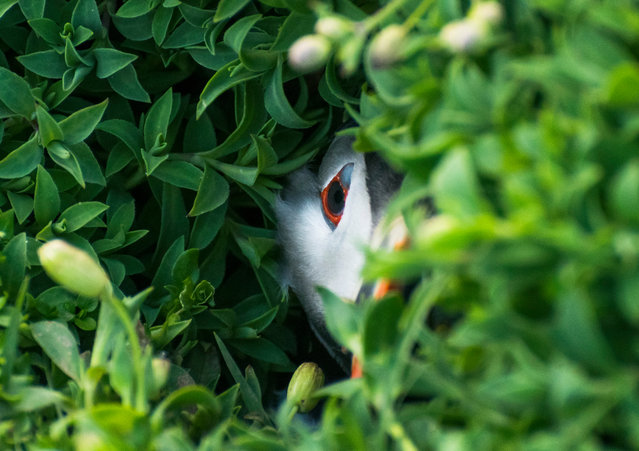
Oliver Teasdale, under-12 category winner: Puffin in a Hole, Skokholm Island, Pembrokeshire. “... I was lucky enough to be sat by a side window of one of the hides when this little puffin poked his head out of its burrow. This is my favourite shot from the sequence as the puffin is well hidden by the sea campion growing at the entrance to the burrow”. (Photo by Andy Teasdale/British Wildlife Photography Awards 2017)
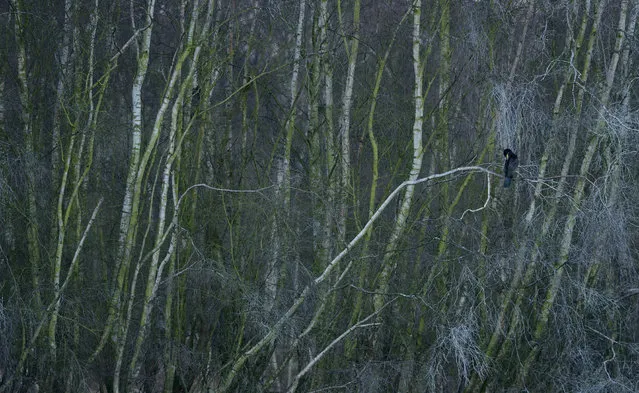
Ben Andrew won the British seasons category for his portfolio of images taken in Holme Fen national nature reserve, Cambridgeshire, which portrayed British wildlife at its best in each of the four seasons. “In late winter, the cormorants begin to return to the trees, ready for the short, but busy, nesting season. At first, individuals were spending the days sitting around on branches, occasionally guarding nests or adding branches to them. However, after a short while the males started to display, attract partners and mate. During this time it was still cold and the lakes had a gloomy, eerie feel to them”. (Photo by Ben Andrew/British Wildlife Photography Awards 2017)
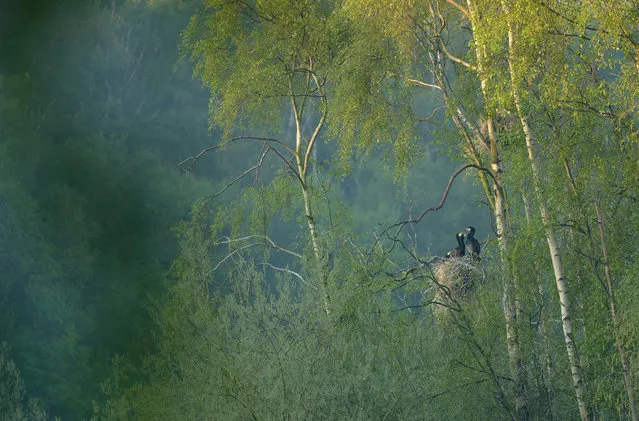
“As winter’s grip loosened and spring arrived, the eggs began to hatch. This image shows a nest containing three, begging their parent for the first meal of the day. At this time of year I had to be on site at 5am to capture the first rays of light hitting the nest. Often, as the morning wore on and the light grew more harsh, the chicks became less active and spent large amounts of time asleep in the nest”. (Photo by Ben Andrew/British Wildlife Photography Awards 2017)
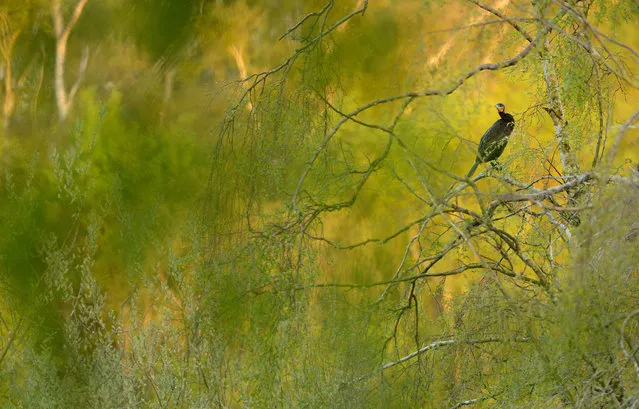
“Spring soon became summer and the chicks started to leave their nests, leaving the adults with time to rest and once again care for themselves. This image shows an adult bird perched in a lush, almost tropical world, although in reality the silver birch trees have simply sprouted plenty of leaves and the site has transformed into a green and yellow oasis. The noise has also died down as birds venture away; soon it will no longer be full of the busyness that it displayed over the past few months”. (Photo by Ben Andrew/British Wildlife Photography Awards 2017)

“Fast forward to autumn and the birds are still on site, using the trees as a safe place to roost each evening. I wasn’t entirely sure if they’d actually do this at this particular spot, but took a chance when I was visiting one morning. Luckily, a bird was there, drying its wings in the first rays of morning sunshine. The orange autumnal glow of the leaves being illuminated by the rising sun was incredibly fortuitous, but sometimes nature rewards you for repeat visits to the same spot”. (Photo by Ben Andrew/British Wildlife Photography Awards 2017)
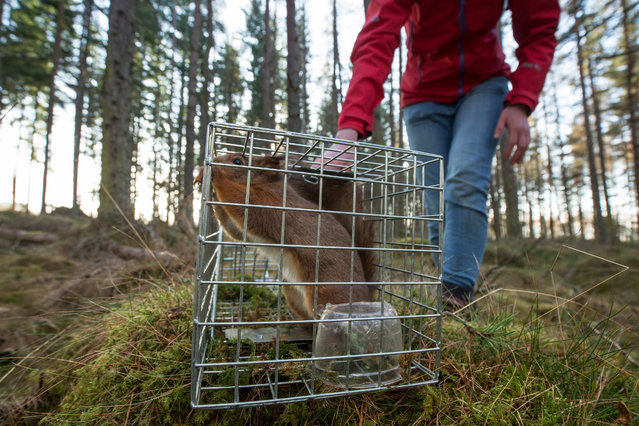
Documentary series winner, Peter Cairns. Cairns shot a series of images of the translocation of red squirrels to forests in the north-west Scottish Highlands, where they have been absent for decades.“On moving day the traps are set and checked within hours. Here a squirrel has been captured from a forest where they’re abundant”. (Photo by Peter Cairns/British Wildlife Photography Awards 2017)
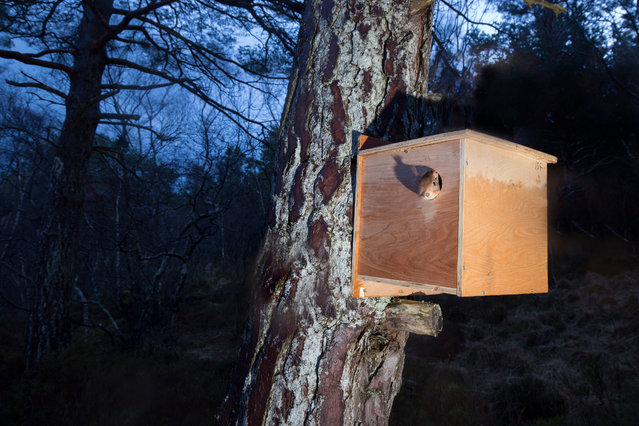
“Early the next morning, the urge to feed forces the squirrel out into its new woodland home in Shieldaig”. (Photo by Peter Cairns/British Wildlife Photography Awards 2017)
10 Nov 2017 09:01:00,
post received
0 comments
